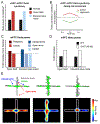Prefrontal Cortical Control of Anxiety: Recent Advances
- PMID: 35086369
- PMCID: PMC9869286
- DOI: 10.1177/10738584211069071
Prefrontal Cortical Control of Anxiety: Recent Advances
Abstract
Dysfunction in the prefrontal cortex is commonly implicated in anxiety disorders, but the mechanisms remain unclear. Approach-avoidance conflict tasks have been extensively used in animal research to better understand how changes in neural activity within the prefrontal cortex contribute to avoidance behaviors, which are believed to play a major role in the maintenance of anxiety disorders. In this article, we first review studies utilizing in vivo electrophysiology to reveal the relationship between changes in neural activity and avoidance behavior in rodents. We then review recent studies that take advantage of optical and genetic techniques to test the unique contribution of specific prefrontal cortex circuits and cell types to the control of anxiety-related avoidance behaviors. This new body of work reveals that behavior during approach-avoidance conflict is dynamically modulated by individual cell types, distinct neural pathways, and specific oscillatory frequencies. The integration of these different pathways, particularly as mediated by interactions between excitatory and inhibitory neurons, represents an exciting opportunity for the future of understanding anxiety.
Keywords: anxiety; avoidance; interneurons; oscillations; prefrontal cortex; rodent.
Conflict of interest statement
Conflict of Interest
The authors declare no competing financial interests.
Figures







